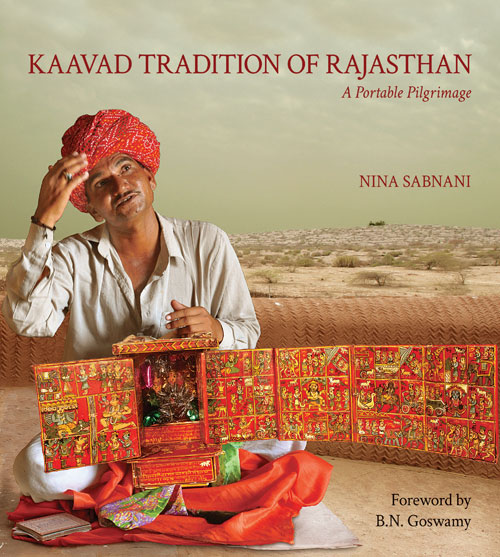|
|
The South
Asian Life & Times - SALT |
|
|||
|
Contents Feature Heritage People
Book Reviews Kaavad
Traditions of Rajasthan
- exploring
|
|
||||
|
Kaavad Tradition of Rajasthan
A well-researched book on a lesser known oral
tradition of storytelling, it traces all aspects of Kaavad – the anatomy of
the Kaavad, the community of Kaavad makers, the storytellers and their
repertoire of stories. A 400 year old oral tradition of storytelling,
called ‘Kaavad Banchana’, is still alive in Rajasthan, where stories from
the epics Mahabharata and Ramayana, from the Puranas, and folk tales are
told with the help of a Kaavad. The Kaavad is a portable,
brightly painted wooden box with multiple wooden panels hinged together.
Each panel bears a painted narrative.
The
storyteller, who travels around to the homes of his patrons, opens and
closes the panels as the story progresses.
The
paintings are normally of Gods, goddesses, saints, local heroes and the
patrons. Kaavads are made by the Suthar (carpenter) community in Mewar for
the Kaavadiya Bhat (storyteller) from Marwar “who brings it to his patron’s
houses in Rajasthan.” The maker, the storyteller and his patron, together
have kept the tradition alive. The Suthar community of Bassi, a tiny village near
Chittor (on the road to Kota), takes pride in being the only Kaavad makers
in the country. Of the 25 families of Suthars that live there only five or
six families are involved in making Kaavads. The Kaavadiya Bhats are the wandering storytellers
of the Kaavad tradition who live around the Jodhpur, Nagaur and Kishangarh
districts of Rajasthan. They use the Kaavad to make a living. The term
‘Bhat’ distinguishes them from the Kaavadiyas who carry water from the
Ganges in Haridwar to their hometowns in ‘Kaavads’ (two baskets balanced on
a pole in which the pots of water are placed and carried on the shoulder by
the Kaavadiya). A beautifully illustrated book, it transports the
reader to another world – into the lives of Kaavad makers, storytellers and
their patrons. A must read for those interested in Indian folklore. About the
Author
|
|||||
|
Copyright © 2000 - 2015 [the-south-asian.com]. Intellectual Property. All rights reserved. |
|||||
